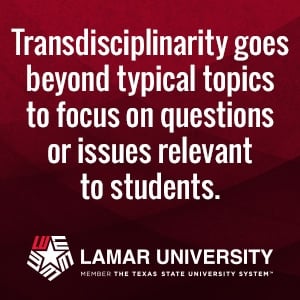
For years, educators have used thematic units to connect all subjects or disciplines to a single topic. A thematic unit about the moon will include a thorough scientific study of the moon’s characteristics and phases as well as its relation to other bodies in space. Students will read and discuss both fiction and nonfiction literature and may write a story or essay about the moon (language arts). They will use moon phases (science) to study fractions (mathematics). They will study the historical significance of the moon and how ancient civilizations used the moon to measure time (history). Students will recreate the moon as they believe Picasso or Degas might have done (art) and sing songs about moon magic (music).
In each lesson, children learn important information and practice skills specific to the discipline, such as identifying story structure in language arts or studying important figures and dates in history. However, when teachers approach the lesson as a thematic or interdisciplinary unit, students complete the lesson in isolation. Students calculate fractions in math, and they only write in language arts classes. This does not challenge students to make use of any and all of the disciplines when solving a problem or exploring an important world issue. To help students take charge of their own learning, as well as use multiple resources as they work through the problem-solving process, teachers are now using the transdisciplinary approach.
What Is Transdisciplinarity?
When teachers work together to prepare a transdisciplinary unit, they do not choose a topic, like the moon, apples or computers. Instead, they teach across the curriculum, focusing on a question or issue that is relevant to their students. It may be that local air quality is deteriorating, or that their families are supporting a youngster in imminent danger of starvation, and world hunger is on their minds. Issues surrounding equality, human rights or global warming may be on their list of concerns. Arriving at solutions to any issue requires the application of concepts and skills from multiple disciplines.
Why Use a Transdisciplinary Approach?
Teachers at all grade levels often find their chaotic schedules frustrating. At the elementary level, a district schedule may dictate the amount of time teachers can spend on any given lesson.
Imagine a class deeply engrossed in a discussion about the Underground Railroad (history) that has led to a lively debate about following the law or doing what is right (ethics). Then imagine the disappointment of both teacher and students when, at the end of forty minutes, the teacher must stop and re-focus the class on math, science or guided reading. At the middle- and high school levels, a bell every forty minutes demands that students leave the room no matter what serious learning is taking place.
Putting Time on the Students’ Side
Transdisciplinarity breaks down the time barriers that fragment a student’s day. Teachers have the flexibility to schedule significant blocks of time for research, collaborative discussion and problem-solving. For instance, a pair of teachers can switch classrooms to complement what the other just taught, or merge their student groups and teach together to build on one another’s subject matter expertise. They can teach mini-lessons to address specific gaps in their students’ knowledge or work with individuals and small groups that need re-teaching support.
Developing Independence for the Future
When students use the transdisciplinary approach to problem-solving, they can experience the freedom of learning and discovery. Instead of working through a rigid scope and sequence in individual classes, they enjoy opportunities to learn at their own pace and in their own style, while teachers support, teach and mentor.
Although students have a certain amount of autonomy over their work product, teachers in all disciplines identify specific standards that students must master or practice throughout the school year. As collaborative plans develop, teachers in each discipline outline academic expectations and design activities to clearly assess progress for each standard.
Developing a successful transdisciplinary approach to learning takes time and requires commitment from both teachers and school leadership. The outcome, however, can be richly rewarding. According to the Institute for the Future, “Many of today’s global problems are just too complex to be solved by one specialized discipline (think global warming or overpopulation). These multifaceted problems require transdisciplinary solutions.”
Learn about the Lamar University online M.Ed. in Teacher Leadership program.
Sources:
Edutopia: Transdisciplinarity — Thinking Inside and Outside the Box
Educational Broadcasting Corporation: Interdisciplinary Learning in Your Classroom
ASCD: Interdisciplinary Curriculum